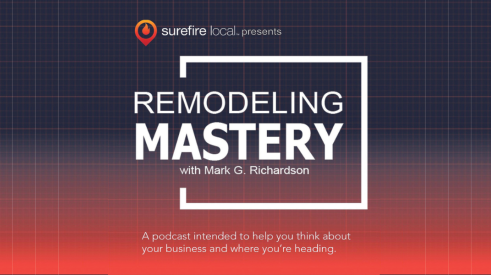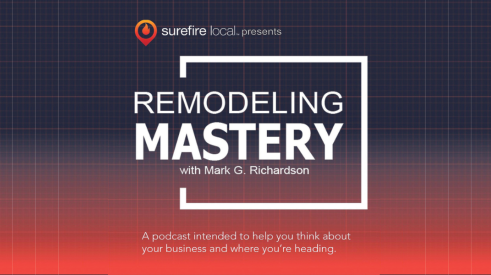Nothing frustrates remodelers more than a client or project that doesn’t play out the way it appeared when the lead first came in. Time spent qualifying leads can eliminate that frustration, if the remodeler knows what lead makes for the best client. Feinmann Remodeling’s owner, Peter Feinmann, CR, bases his qualification process on a simple philosophy: The better the clients match the company, the more satisfied they’ll be. Using criteria proven effective by the company’s historical data, Feinmann prioritizes leads in a manner that quickly identifies clients that won’t frustrate the company.
Professional Remodeler: Why take such pains to qualify leads?
FEINMANN: We’re looking for client match. I want to do as little work as possible vs. spending a lot of time selling jobs to people who won’t buy us. [This process gives me] high gross-profit dollars, more time available to better run the firm, more time available to hire the right people, [more time] to have a lifestyle that’s important to me as the owner.
We spend tremendous amounts of time qualifying a client on a variety of levels. [Think] VIRUS: We look for clients who want good Value, that have the resources for Investment, that really value Relationships, who are looking for Unique solutions for their needs, and demand a high level of customer Service.
|
PR: How does the process begin?
FEINMANN: When a call comes into the office, [the office manager] fills out a new record on the computer. She’s entering a lot of data: lead date, where the lead came from, who the referral is. She gave me about 10 leads in the past week.
I will literally look at the pile and be prioritizing "who do I call back first?" Referrals from past clients get highest priority. [This client] has given me eight referrals. That’s a key part. I have some people who are constantly referring us.
PR: It’s the quality of the referrals?
FEINMANN: I’ve gotten some referrals from people where I don’t get a lot of jobs. I get referrals from people where every referral is a quality referral. You get to know that intuitively. If they refer us to someone, it’s likely that that person wants Feinmann Remodeling to do her project. When I get a referral from [that kind of client], I just know that [she] is saying, "Feinmann’s a fantastic company."
This is the beauty of our database. The database allows me to look at who my referrals are and what the numbers are. We call them client advocates. These are the people who are constantly responsible for Feinmann’s name being put out there.
PR: How important is the database?
FEINMANN: It allows a tremendous amount of analysis to be done at your fingertips. We know who our top [customers are and their locations]. We know our first tier is Arlington and Newton, my second tier is Winchester and Lexington.
I have an Excel report that tells me that through July of this year, I have 132 leads. I have 12 from past clients and 80 from referrals, which represents almost 70 percent of all my leads. Of my 15 sales for $1.6 million, 87 percent of my sales have come from past clients and referrals. If I go to the December report of last year, you would see 90 percent of my jobs are coming from past clients and referrals. This is historical data for the last five or six years.
PR: What’s after location?
FEINMANN: I look at the type of job. Kitchen/bath rises to the top. I know from my leads data that I sold four jobs this year that were additions with kitchens for $772,000. Plus I sold four more kitchen jobs for $267,000. Up to $1 million of the $1.9 million we’ve sold has a kitchen and bath. I haven’t gotten to the whole house, which you know will have a bath, and that’s another $125,000.
I’m looking at this report, and saying 63 percent of what we’ve sold in this period is a kitchen and bath. Kitchens always rise to the top.
PR: Where does the gross margin come into play?
FEINMANN: I analyze that in another place. I know my kitchens are my highest gross-profit projects. I know that from job costs, financial reporting.
PR: It’s not just job type, though, it’s kitchens that you design in-house.
FEINMANN: That’s correct. Kitchens designed by others [garner lower gross profit]. So if I get a call, "do you want to bid on my job?" What’s my common answer? "Not typically."
|
|
|
|
|
|
|
PR: Give an example of how you prioritize a lead.
FEINMANN: Here’s a small job, sunroom, living room, need new windows, build bookcases in living room. If this is a job-truck sign, I couldn’t get rid of it quick enough. But because it’s a neighbor of a [past client], I’ll massage this one. And she says she has a $50,000 budget for this. It’s a pretty good lead.
I’m looking at Newton; it’s a decent budget; great client-referral to a neighbor. I don’t throw this away so quickly. It’s not on top, but on its way to the top. I’d call this a 7 out of 10.
I see it as a client match. This client’s going to say, "When can you start?" We’re going to have control of the schedule. They will pay the margins that will allow us to take really good care of them.
I am also a sales manager. I am looking at the [job] board, knowing that my December may get a little sparse. So I’m now thinking, are there any smaller interior jobs we can get into the cycle to cover a month or six weeks until the weather gets better?
PR: Lead qualification isn’t all mechanical. There is an intuitive aspect.
FEINMANN: That’s right. [But] there’s very little I do without some very real information. I’ve always been a stickler for having enough data that supports the intuition.
|
PR: What do you do when you call the lead?
FEINMANN: I’m now digging deeper before I spend a couple of hours with them. I’m going to the type of work; I want to start looking at that budget; I want to see if there are some critical issues:
"We moved here, we want to see what things cost." No thanks.
"My father can’t visit [us at the house]. Can you get this going?" They have a real issue here; it’s not about money, it’s about Dad coming to visit.
PR: Of 132 leads, you had 50 in-home visits and sold 15 jobs. Is that an acceptable close ratio?
FEINMANN: The industry standard is one in four on bids. I’m [closing] one in four visits.
PR: How did you get to where you knew clearly what kind of client was your client?
FEINMANN: Now you’re dealing with the philosophy of the owner: I want to have a life. I want to know my family, I want to know my children, I want to be able to have whatever relationships I can have with whatever people I can, because I value that in addition to valuing loving what I do. I spent years trying to find the client base that would support that vision.
Some remodelers choose their client because there’s a value philosophy behind that choice. I provide the best customer service when I choose the client that has the best match with Feinmann Remodeling. If I can continue to find the people that best match Feinmann Remodeling, then I get really happy clients who give me great referrals, and I can continue the cycle.
Also See:
Add new comment
Related Stories
How to Get More Leads with a Stronger Remodeling Brand
Discover how to build a strong brand for your construction company, and learn key strategies to differentiate and attract better leads
How to Increase Your Odds of Closing Remodeling Sales
Use these tips to hone your sales process and grow close ratio
Building A Small Projects Division from the Ground Up
Through hard work and careful strategy, Harth Home Services has seen big growth
A Mindset of Serving Others
A research study shows surprising results about what makes us take ownership of our work.
10 Questions to Identify Sales Weaknesses
Mark Richardson runs you through a proper fitness check-up—for you and your sales team, that is.
How to Communicate with Today's Cautious Remodeling Client
Amid economic skepticism, Americans continue to spend. Now, how can you get them to spend on remodeling?
7 Tips to Lower Remodeling Costs
As material and labor prices spiral out of control, many homeowners are putting the brakes on remodeling projects. Use these guidelines to bring down costs.
How to Ease Client Fears and Take Control of the Remodeling Process
Industry advisor Mark Richardson offers seven ways to control your client's fantasy of remodeling and, ultimately, minimize their fears and enhance their understanding
3 Things I Learned from a Day with Normandy Remodeling
How Normandy uses numbers to motivate and the power of their showrooms
Today’s Consumer is Your Biggest Competitor
Understanding the real competitor allows you to sharpen the correct skills












